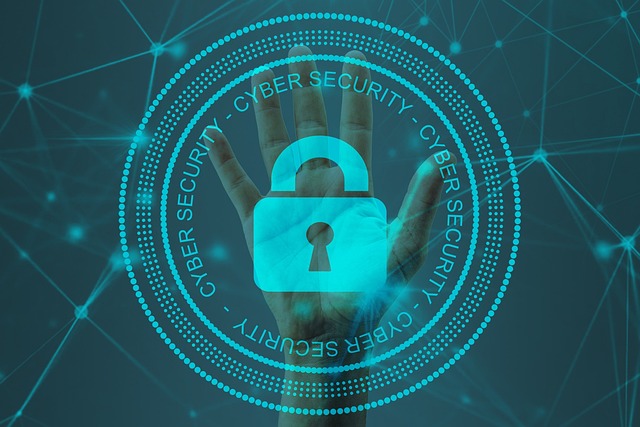Application Protection: Safeguarding Software and Data from Threats
Modern software applications face constant threats from cybercriminals seeking to exploit vulnerabilities and steal sensitive data. Security applications have become essential tools in the digital landscape, providing comprehensive protection for both individual users and enterprise-level systems. These applications employ advanced technologies including artificial intelligence to detect, prevent, and respond to various security threats in real-time.

The digital transformation has made software applications central to nearly every aspect of our lives, from banking and shopping to communication and entertainment. This widespread adoption has also created new opportunities for cybercriminals to exploit vulnerabilities and gain unauthorized access to sensitive information. Modern security solutions serve as the first line of defense against these evolving threats, implementing multiple layers of protection to safeguard applications and their underlying data.
What Is Application Security and Why Does It Matter?
Application security encompasses the measures and practices designed to protect software applications throughout their entire lifecycle, from development to deployment and ongoing maintenance. This comprehensive approach involves identifying potential vulnerabilities, implementing protective measures, and continuously monitoring for suspicious activities. The primary goal is to prevent unauthorized access, data breaches, and other malicious activities that could compromise the integrity of applications and the sensitive information they process.
Modern applications handle vast amounts of personal and business data, making them attractive targets for cybercriminals. A single security breach can result in financial losses, regulatory penalties, and significant damage to an organization’s reputation. Effective application security helps maintain user trust while ensuring compliance with data protection regulations.
How AI Transforms Application Security
Artificial intelligence has revolutionized the field of application security by enabling more sophisticated threat detection and response capabilities. AI-powered security systems can analyze patterns in user behavior, network traffic, and application performance to identify potential threats that traditional security measures might miss. Machine learning algorithms continuously improve their ability to recognize new attack vectors and adapt to emerging threats.
AI enhances security solutions through automated vulnerability scanning, real-time threat analysis, and predictive security modeling. These systems can process enormous amounts of data in seconds, identifying anomalies and potential security risks with remarkable accuracy. Additionally, AI-driven security solutions can respond to threats automatically, implementing countermeasures before human intervention is possible.
Essential Features of Modern Security Solutions
Contemporary security applications incorporate multiple protective technologies to create comprehensive defense systems. These typically include real-time malware detection, firewall protection, intrusion prevention systems, and data encryption capabilities. Many security solutions also feature vulnerability assessment tools that regularly scan applications for potential weaknesses and provide recommendations for remediation.
User authentication and access control represent another critical component of security solutions. Multi-factor authentication, biometric verification, and role-based access controls help ensure that only authorized individuals can access sensitive applications and data. Advanced security platforms also include monitoring and logging features that track user activities and system events for forensic analysis and compliance reporting.
Popular Security Solutions and Pricing
The security market offers various solutions ranging from basic antivirus protection to comprehensive enterprise security suites. Understanding the cost structure helps organizations make informed decisions about their security investments.
| Security Solution | Provider | Key Features | Monthly Cost Estimation |
|---|---|---|---|
| Enterprise Security Suite | Symantec | Advanced threat protection, AI detection | $15-50 per user |
| Cloud Security Platform | CrowdStrike | Real-time monitoring, endpoint protection | $25-75 per endpoint |
| Application Security Testing | Veracode | Static/dynamic analysis, vulnerability scanning | $200-1000 per application |
| Mobile Security Solution | Lookout | Mobile threat defense, application scanning | $3-8 per device |
| Network Security Platform | Palo Alto Networks | Firewall, intrusion prevention | $500-5000 per month |
Prices, rates, or cost estimates mentioned in this article are based on the latest available information but may change over time. Independent research is advised before making financial decisions.
Implementation Best Practices for Security Solutions
Successful implementation of security solutions requires careful planning and ongoing management. Organizations should begin by conducting thorough risk assessments to identify their specific security needs and vulnerabilities. This analysis helps determine which types of security tools are most appropriate and how they should be configured to provide optimal protection.
Regular updates and maintenance are crucial for maintaining the effectiveness of security solutions. Cybercriminals constantly develop new attack methods, making it essential to keep security software current with the latest threat intelligence and protective measures. Additionally, organizations should establish incident response procedures and regularly test their security systems to ensure they function properly during actual security events.
Employee training also plays a vital role in maximizing the effectiveness of security solutions. Users need to understand how to properly use security features and recognize potential threats that automated systems might not detect. Regular security awareness training helps create a culture of security consciousness that complements technical protective measures.
Future Trends in Application Security
The application security landscape continues to evolve rapidly, driven by advancing technologies and changing threat patterns. Zero-trust security models are gaining popularity, requiring verification for every user and device attempting to access applications, regardless of their location or previous access history. This approach provides enhanced protection in increasingly distributed computing environments.
Quantum computing represents both an opportunity and a challenge for application security. While quantum technologies may eventually render current encryption methods obsolete, they also offer the potential for developing virtually unbreakable security systems. Security solution developers are already working on quantum-resistant encryption algorithms to prepare for this technological transition.
The integration of security measures directly into application development processes, known as DevSecOps, is becoming standard practice. This approach ensures that security considerations are addressed from the earliest stages of application design rather than being added as an afterthought. As this trend continues, security solutions will become more seamlessly integrated into development workflows and application architectures.




